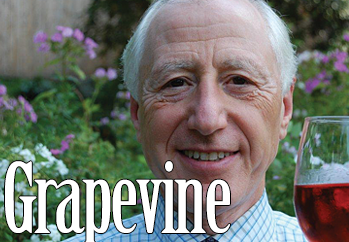Enjoying the Bounty of France’s Loire Valley
Opinion Advocates for ideas and draws conclusions based on the author/producer’s interpretation of facts and data.
 The Loire Valley is mesmerizing. It enjoys a storied past of the high times of the French nobility. For centuries, the region provided the epitome of the finest of French life: fine cuisine, exquisite castles and chateaux and elegant wines.
The Loire Valley is mesmerizing. It enjoys a storied past of the high times of the French nobility. For centuries, the region provided the epitome of the finest of French life: fine cuisine, exquisite castles and chateaux and elegant wines.
The Loire Valley is mesmerizing. When my wife and I visited the region, we meandered through an abundance of medieval banquet halls and bedrooms in lavish royal castles, followed by strolling along medieval streets of tiny villages scattered throughout the hills and vales of the countryside, followed by ambling through the vineyards of family-owned wineries, sampling the essence of their dedication to their craft.
The Loire Valley is mesmerizing. This valley, a narrow swath of countryside that runs from the Atlantic Ocean eastward for 629 miles (by comparison, the Hudson River is 315 miles), is home to villages whose names grace the bottles of the local wines and whose names are derived from the castles and chateaux that have dominated the landscape for five centuries.
The Loire Valley is mesmerizing. In this, the “Garden of France,” as it has been referred to since medieval times, we sampled local wines from the four main subregions: Center Loire, Touraine, Anjou and Nantes.
As the Loire River wends its way from its source deep in the eastern countryside between the city of Sancerre and the eastern extremities of Burgundy and the Rhone Valley, to its mouth on the Atlantic Ocean near the port city of Nantes, numerous microclimates have been created from the breezes and humidity of the river. As a result, there are four principal grapes grown in these four subregions:
— Sauvignon Blanc, principally in Center Loire, in and around the towns of Sancerre and Pouilly Fume;
— Chenin Blanc, principally in Touraine, in and around the town of Vouvray;
— Cabernet Franc, principally in Anjou and Touraine, in and around the town of Chinon;
— Melon de Bourgogne, principally in Nantes, in and around the town of Muscadet.
These designations provide a road map to understanding the bottle labels on these wines. Generally speaking, if the label says Sancerre, the grape is Sauvignon Blanc; likewise for the other three towns cited on bottle labels. Four grape varieties, four subregions – a simple way to translate a wine label.
Each grape from each region has its own unique style.
The local Sancerre/Sauvignon Blanc wines are notable for their refreshingly crisp citrus and grassy aromas and flavor, markedly different from their New Zealand or American counterparts. The dichotomy of these wines is that they are at once dry yet they have a deep complexity and palate-quenching component. Many avid New Zealand Sauvignon Blanc lovers are smitten forever once they’ve indulged in a Sancerre.
The Vouvray/Chenin Blanc wines have many profiles, depending on the local microclimate and soils. The versatility of those wines produced on the hillsides of Vouvray range from dry to slightly off-dry, in both still and sparkling offerings. Consumers who are in the eternal search for an alternative to everyday Chardonnays find nirvana in Vouvray. These wines have become my latest recommended white wine for their accessibility and ability to age.
The Chinon/Cabernet Franc wines are exceptional representations of this grape. Grown in many wine regions around the world, Chinons tend to be more aromatic, with a perfect balance of fruit and acid. Aromas of spices and tobacco waft into the nostrils; rich, supple flavors of raspberries and black fruits excite the palate, with a gentle dose of tannins to round off the wine.
The Muscadet/Melon de Bourgogne wines are as crisp and refreshing as a fine Chablis in neighboring Burgundy – and pairs equally well with shellfish. This is bone-dry wine that is also crisp and refreshing, with aromas of grapefruit and lemon enhancing the high acidity levels.
All along the picturesque countryside and vibrant byways of the river, in the midst of medieval chateaux, we enjoyed the unique wines of the Loire Valley. Truly a mesmerizing experience.
Nick Antonaccio is a 47-year Pleasantville resident. For over 30 years, he has conducted wine tastings and lectures. He offers personalized wine tastings for consumers and businesses. Nick’s credo: continuous experimenting results in instinctive behavior. You can reach him at nantonaccio@theexaminernews.com.
